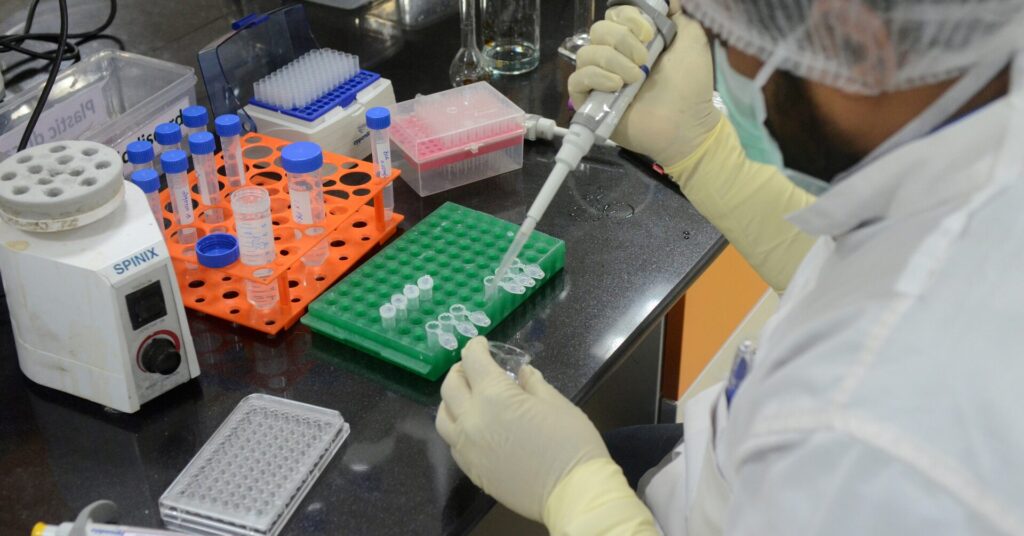In an increasingly interconnected world, one might expect that healthcare access and quality would improve universally. But for millions of LGBTQ+ individuals across the globe, the reality is far more complex and troubling. Despite advances in medicine, policy, and human rights in many regions, the global health crisis facing LGBTQ+ populations remains urgent, multifaceted, and deeply rooted in stigma, discrimination, and systemic neglect. In this post, we’ll explore the dimensions of this crisis, its root causes, the real-world implications, and pathways toward meaningful change.
Understanding the Scope
When we speak of LGBTQ+ healthcare, we refer to the health needs of people whose sexual orientation, gender identity, or gender expression falls outside of heteronormative or cisgender norms. These include, but are not limited to, lesbian, gay, bisexual, transgender, queer/questioning, intersex, and other gender-diverse individuals.
Disparities in outcomes and access
Research clearly demonstrates that LGBTQ+ persons face disparities in both health outcomes and access to care:
-
A broad review noted that “most medical providers and staff lack knowledge on LGBTQ+ health and … the global crisis in contemporary LGBTQ+ medicine” is real.
-
Health-care access issues: According to one survey, LGBTQ+ adults are twice as likely as non-LGBTQ+ adults to report negative experiences while receiving health care in the last three years.
-
Higher burden of mental health concerns and risk behaviors: For example, LGBTQ+ people are at greater risk for mood disorders, anxiety, substance use, suicidal ideation, and delay in seeking care.
-
Physical health risks: LGBTQ+ people may face elevated risks for certain cancers (for example, lesbian/bisexual women less likely to receive cervical screening), HIV/AIDS, and other chronic conditions.
A truly global crisis
The challenge is not limited to one region. From high-income nations to low- and middle-income countries, LGBTQ+ people can find themselves excluded, marginalized, misdiagnosed, or denied care. The combined impact of legal barriers, stigma, lack of provider training, resource constraints and cultural discrimination create a global health care crisis with no borders.
-
A recent report emphasizes that for LGBTQI+ communities around the world, seeking health care frequently means facing discrimination, stigma, and providers unequipped to deliver adequate care.
-
Climate change and other compounding crises also magnify these disparities, particularly for sexual and gender minorities in disadvantaged regions.
Hence, the title: Health Without Borders. Because while disease and illness do not respect borders, neither do the inequities in care.
Root Causes of the Crisis
To address this crisis, we must first understand the fundamental drivers behind it. Some of the key contributing factors include:
Stigma, discrimination and minority stress
Being LGBTQ+ in many settings brings with it layered stigma: internal, interpersonal, institutional. The concept of minority stress explains how chronic exposure to prejudice, rejection, internalized negativity and discrimination contributes to adverse health outcomes.
These stresses often discourage LGBTQ+ individuals from seeking preventive care, disclosing relevant information to providers, or even entering into the healthcare system at all.
Lack of provider competence and systemic bias
Many health systems remain anchored in heteronormative and CIS normative assumptions. Studies have found:
-
A lack of provider training or awareness about the specific health needs of LGBTQ+ persons (for example transgender care, hormone therapy, reproductive issues in queer women).
-
Institutional policies that fail to protect against discrimination or recognize the needs of sexual/gender minorities. For example: “fear of stigma and deep-seated institutional distrust remain major barriers to care for LGBTQ+ communities.”
-
In some cases, refusal of care, inadequate referrals, misdiagnosis or omission of LGBTQ+ issues altogether.
Legal, policy and rights deficits
In many countries sexual orientation or gender identity remains criminalized or heavily stigmatized. These legal frameworks or their effects serve as major deterrents to accessing care. Additionally, health services tailored to LGBTQ+ populations may be under-funded or non-existent.
Inadequate research and data
A recurring theme: the lack of robust, globally-representative research on LGBTQ+ health. This means gaps in evidence, few culturally-tailored interventions, and limited inclusion of sexual/gender minority populations in mainstream health data sets.
Intersectional burdens
LGBTQ+ individuals often also belong to other marginalized groups (by race, ethnicity, socio-economic status, geography, disability). The overlay of multiple forms of discrimination amplifies risk and weakens access.
Resource and infrastructure limitations in low/middle income settings
In many regions, LGBTQ+-friendly services are simply unavailable, under-resourced, or operate clandestinely. When climate change, pandemics, or conflict arise, LGBTQ+ groups tend to be among the first to slip through safety nets.
Real-World Implications
These root causes translate into very concrete and often tragic realities for LGBTQ+ people around the world.
Delayed or avoided care
Because of fear of discrimination, past negative experiences, or invisibility of their identities in medical settings, many LGBTQ+ individuals delay or avoid seeking care. The consequence is worse health outcomes, more advanced disease, higher costs, and greater suffering.
Mental health crisis
The mental health burden is enormous. Elevated anxiety, depression, substance use, self-harm and suicide rates are all linked to the structural marginalization of LGBTQ+ people. For instance, studies indicate that forces such as discriminatory policy and hostile social climates are directly associated with increased mental distress among transgender and gender-diverse adults.
Poorer physical health outcomes
Screening gaps, late diagnoses, and inadequate tailored care contribute to higher rates of certain conditions in LGBTQ+ populations. For example: lesbian/bisexual women less likely to receive cervical cancer screening and thus at risk of later stage disease.
Barriers in reproductive, transition or affirming care
Transgender individuals often face barriers in accessing gender-affirming treatments, hormone therapy or surgeries, as well as reproductive services that respect their identity. This lack of access exacerbates distress and worsens overall health.
Global setbacks and emergent threats
In certain countries, the withdrawal of donor funding for LGBTQ+ health services, or the adoption of punitive laws, has led to a rollback of progress. For example, the suspension of an LGBTQ+-friendly center in Nepal after funding was cut, leaving many without HIV, counselling or safe-sex services.
Why It Matters for Every Healthcare System
Even if your locale is comparatively progressive, the globalized nature of migration, travel, technology, and public health means that LGBTQ+ health disparities are not someone else’s problem — they are our collective problem.
-
When LGBTQ+ individuals avoid care, it affects the broader health system’s ability to prevent, detect and treat illnesses in the population.
-
Ignoring LGBTQ+ health perpetuates inequity, which undermines the ethical and performance goals of modern healthcare.
-
Inclusive healthcare systems that address diversity tend to produce better outcomes, improve trust, and reduce costs over time.
-
In the age of pandemics, climate disasters, transnational migration — the resilience of health systems depends on reaching all people, including sexual and gender minorities.
For a clinic or provider network (such as Local MD) committed to “Health Without Borders,” recognizing, affirming, and proactively engaging LGBTQ+ health issues isn’t optional—it’s essential.
Steps Toward Solutions
What can be done? The crisis is real, but it’s not insurmountable. Here are actionable pathways, relevant both globally and locally:
Build provider competence and inclusive cultures
Healthcare organizations must invest in training, recruiting, and retaining staff who are knowledgeable about LGBTQ+ health. This includes:
-
Educating all providers about sexual orientation, gender identity, queer health issues, and the social determinants affecting LGBTQ+ patients.
-
Establishing non-discrimination policies specifically inclusive of sexual orientation and gender identity.
-
Creating visible signals of LGBTQ+ friendliness (e.g., inclusive patient intake forms, pronoun usage, visible signage).
-
Engaging peer support and community liaison to ensure trust and outreach.
Improve data collection and research
Without data, the needs remain invisible. Health systems and researchers should:
-
Include sexual orientation and gender identity (SOGI) data fields in medical records, population surveys, and public health monitoring.
-
Fund research on LGBTQ+ health in low- and middle-income countries and culturally diverse settings.
-
Use evidence to develop tailored interventions, monitor outcomes, and scale best practices.
Expand access and tailor services
For meaningful impact:
-
Ensure that insurance/health-coverage policies and cost structures allow LGBTQ+ individuals to access care without undue barrier.
-
Develop services that are explicitly queer-friendly (hormone therapy, gender-affirming surgery, sexual health, mental health).
-
Partner with community organizations that serve LGBTQ+ populations to bridge gaps, especially in underserved regions.
Address legal, policy, and societal barriers
Healthcare cannot heal in isolation of civic rights and societal inclusion:
-
Advocate for non-discrimination laws that protect sexual orientation and gender identity.
-
Work to de-criminalize same-sex relations, gender-nonconforming identities where they remain illegal, as the threat of legal penalty deters care seeking.
-
Understand how policy changes (e.g., banning gender-affirming care, cuts to funding) reverberate into health outcomes.
Prioritize equity in global health
Global funders and health agencies must recognize LGBTQ+ inclusion as integral rather than optional:
-
Ensure that HIV, TB, mental health, sexual health programs explicitly include LGBTQ+ populations.
-
In humanitarian and disaster responses, ensure the specific vulnerabilities of sexual and gender minorities are accounted for.
-
Support community-led organizations in regions where LGBTQ+ voices are marginalized or under-funded.
Foster intersectional frameworks
Recognize that LGBTQ+ individuals are not a monolith. Health interventions must account for intersections: race, ethnicity, religion, age, disability, socioeconomic status. Equity demands tailored responses.
What This Means for Patients, Providers & Communities
For Patients
-
If you identify as LGBTQ+, you have the right to affirming, respectful, and knowledgeable health care.
-
Seek providers or clinics who visibly communicate LGBTQ+ competence (ask about their training, whether they use inclusive language, how they handle confidentiality).
-
Be proactive: share relevant information about sexual orientation and gender identity with your provider if comfortable, and ask about screenings, preventive care, or referral to specialists (for example in gender-affirming care).
-
If you face discrimination or refusal of care, you may report this or seek advocacy. Patient rights matter.
For Providers and Clinics (like Local MD)
-
Assess your intake forms, registration, and electronic health record (EHR) systems: do they include SOGI questions? Are they optional yet normalized?
-
Train staff (front-desk, nursing, physicians, allied health) in LGBTQ+ cultural competence. Avoid assumptions.
-
Audit your services: what gaps exist for LGBTQ+ patients (e.g., hormone therapy, mental health, sexual health)? Partner with community groups.
-
Promote an inclusive environment: visible signs, inclusive pronouns, non-gendered language.
-
Track outcomes: Are LGBTQ+ patients experiencing delays, worse outcomes, higher no-show rates? Why?
For Communities & Advocates
-
Mobilize to ensure that LGBTQ+ health is included in broader health debates (universal care, disaster resilience, global health equity).
-
Build partnerships: community organizations, local health systems, academic centers.
-
Create safe spaces and peer networks for LGBTQ+ individuals to discuss health issues, share experiences, and support one another.
-
Advocate for funding, policy reform, and legal rights that bolster health access.
FAQs
Q: What do we mean by “gender-affirming care”?
A: Gender-affirming care refers to medical, psychological, behavioral and social interventions that support and affirm an individual’s gender identity. This can include hormone therapy, surgeries, counselling, voice therapy, and social transitions. Evidence shows that affirmed gender identity is associated with better mental health outcomes.
Q: Are there regions where LGBTQ+ health care is improving?
A: Yes. In some high-income countries, there have been advances in provider training, policy protections, inclusive coverage, and community-led health programs. However, improvement is uneven, and gains can be fragile—funding cuts, policy roll-backs or legal changes can quickly reverse progress.
Q: Why is data about LGBTQ+ health so limited?
A: Several reasons: (1) historical exclusion of sexual orientation/gender identity from health surveys, (2) small sample sizes, (3) fear of disclosure by participants, (4) lack of funding, and (5) cultural contexts where LGBTQ+ identities are invisible or criminalized—making research harder.
Q: How can someone find an LGBTQ+-friendly provider?
A: Look for clinics that advertise inclusive care, ask about provider training, check whether forms allow you to indicate your pronouns and gender identity, and whether they have experience with LGBTQ+ health issues. Community networks and LGBTQ+ organizations often maintain lists of affirming providers.
Q: What role can telemedicine and digital health play?
A: Digital health offers promise: for remote and underserved LGBTQ+ individuals, tele-counselling, virtual support, and inclusive tele-clinics can bridge gaps. But we must ensure these platforms are safe, private, culturally competent and accessible (technological barriers still exist globally).
Conclusion
The global LGBTQ+ health care crisis is real, pervasive, and intertwined with broader issues of equity, justice, rights and human dignity. For individuals, for communities, and for the global health enterprise, bridging the gap is not a matter of goodwill alone—it is a matter of responsibility.
By recognizing the problem, understanding its roots, and committing to concrete solutions, we can begin to dismantle the barriers that force too many LGBTQ+ people to live in the shadows of healthcare systems. As innovators, advocates, providers, and patients, our aim must be a world where health truly knows no borders—where every person, regardless of who they love or how they identify, has access to the care they deserve.
At Local MD, the journey toward inclusive, affirming care begins today. Let us commit to a future in which “Health Without Borders” is not just a slogan, but a lived reality for all.






